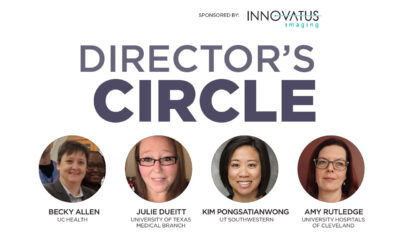
 I am sure that everyone is dealing with copious amounts of data and dashboards in this era of key performance indicators (KPIs). There is now a sharp focus on everything being measurable and performance goals must be measurable. This metric focus has bled into institutional strategies with many organizations tying their strategic goals to data outcomes.
I am sure that everyone is dealing with copious amounts of data and dashboards in this era of key performance indicators (KPIs). There is now a sharp focus on everything being measurable and performance goals must be measurable. This metric focus has bled into institutional strategies with many organizations tying their strategic goals to data outcomes.
It is not my contention that data is somehow bad, but what happens when the metrics and the pursuit of metrics replaces the actual strategy itself. This tendency to mentally substitute strategy with metrics is termed surrogation and is extremely common.
Harvard Business Review recently published an article on surrogation (HBR Sep-Oct 2019 p. 63-69) entitled “Don’t Let Metrics Undermine Your Business.” The article used the Wells Fargo banking scandal as a great example of the concept of surrogation. At Wells Fargo, the strategic focus was on building long-term customer relationships and the metric they chose to measure this was cross-selling. The surrogation took place in the minds of the staff and they substituted cross-selling with the strategy and since rewards were based on number of cross-selling accounts not actually on long-term relationships built, the focus was placed on increasing the number of accounts not on building relationships. This surrogation of the strategy resulted in the exact opposite with the end result being the loss of many customers, in addition to huge fines, litigation and negative publicity.
In health care, I have seen this happen with many strategic initiatives. One great example is in patient experience. Providing great patient experience is a prime focus for every health care organization and has a huge impact on the bottom line. Most every institution utilizes a patient experience survey tool, compares their scores to benchmarks and have patient experience goals.
I have seen staff training that focuses not on delighting the patients, but on raising the scores. For example, one institution had a patient experience question that asked the patient how satisfied they were with their wait compared to their appointment time. The metric was a comparison of appointment time to the time called for service. So, if the appointment was 9 a.m. and I called you at 9:05 a.m. that was tracked as 5 minutes. To increase scores, instead of focusing on the process for why people were waiting, they just lengthened the arrival time so that they could call everyone early or right on time. In other words, they said the appointment was 9:30 a.m. instead of 9 a.m., but told the patient to come at 9 a.m., and then if they called the patient at 9:15 it looked like they were 15 minutes early. The focus was not on the strategy of reducing patients time at the hospital, but how close did we get to the appointment time.
In the minds of the staff they were doing good and on paper wait times were shrinking, but the impact was the opposite. Satisfaction was getting worse and patients were at the hospital longer. These examples of surrogation are probably all around you.
I am in no way suggesting that metrics should be scrapped or not used to measure success or progress toward a goal. I am suggesting that one has considered that and maintain visibility to this tendency so that they do not fall into this trap. There are several techniques that may be helpful to you:
- Employ multiple metrics instead of just one. This allows you to cross-check progress and will decrease the likelihood of hyper focusing on one particular metric.
- Spend time up front really analyzing the why of your strategy and the metrics you chose. Ask yourself, does this measure really get me to my why?
- Analyze, what could someone do to game this metric and how can we ensure that is not happening. I have learned if there is a way that someone can manipulate a measure for a favorable outcome, then they probably will do so. I always ensure that I know exactly how the data is being gathered and the possible way(s) that it could be manipulated.
- Make sure that you have analyzed any possible sources of error in your data.
- Get the people responsible for the strategy involved in the creation of the metric. If those responsible are involved from the beginning and have a clear understanding of the end goal then they are less likely to fall into the metric focus trap and remain focused on your real objective.
- Be mindful around what it is you reward and positively acknowledge. In the case of patient experience, is your biggest celebration of a win around achieving a score or is it around a really great patient story.
There is no way that we will ever escape KPIs, dashboards and metrics. I challenge you to take a little time to take a step back and consider what are all the metrics that you are focusing on and the strategies tied to those metrics and ask yourself some of the questions I outlined above. I certainly did not go into health care to get a certain score on a dashboard. I am in this to provide the highest quality and safest care for everyone. I want the things I measure and reward to reflect that.
Mario Pistilli, CRA, MBA, FACHE, FAHRA, is administrative director for imaging and imaging research at Children’s Hospital Los Angeles. He is an active member and volunteers time for ACHE and HFMA organizations. He is currently serving on the AHRA national Board of Directors. He can be contacted at mpistiili@chla.usc.edu








